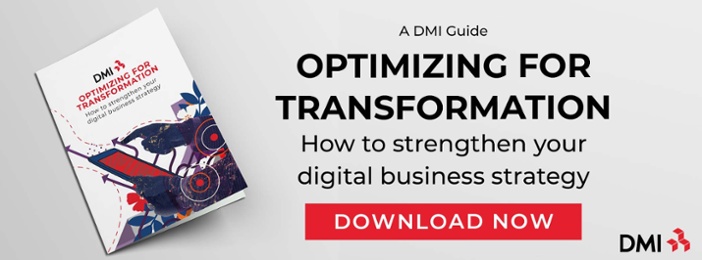
Tips for Reducing Technical Debt & Optimizing Your IT Investments After a Merger or Acquisition
Since 2000, over 790,000 mergers and acquisitions (M&A) have been announced worldwide, reaching a known value of over $57 trillion. According to Investopedia, they are most common in the healthcare, technology, financial services and retail sectors.
These merger and acquisition activities happen for a variety of reasons. While it may be strictly for investment purposes, typically combining or consolidating companies or assets is done to enhance existing product lines, create new market opportunities or improve market share.
From a business and marketing standpoint, M&As can provide a significant competitive advantage. When examining the application portfolio of the two organizations, however, there are often challenges.
For example, one company may have developed intellectual property, but they haven’t maximized its potential. They may be a prime target for acquisition from another company that needs the IP and believes it has the resources to grow the business more effectively.
IT Challenges With Mergers & Acquisitions
You may need to decouple the product or service that is deeply ingrained in another company and pull it into your organization. The challenge here is that you aren’t buying one component or asset; you’re merging or acquiring the entire organization. Therefore, you have to figure out how to keep the new company’s customers, employees and stakeholders engaged during a transition period that creates uncertainty and, often, tension.
Analyzing the application portfolio and processes to find the right mix to benefit the newly formed organization can also be challenging. You may need to redefine the culture as well as decide which products and processes to adopt and which to eliminate or consolidate. At the same time, you may also need to keep some legacy systems running for legal or compliance reasons — even if you decide to move on from these systems moving forward.
Technical Debt in M&A
Some systems will need to be retired because it’s too expensive to continue to maintain them. After a M&A, your organization must complete a line-by-line analysis of the application portfolio and look at the cost justification for each application. If you don’t address these issues now, you’ll acquire a lot of technical debt.
You may be writing integrations to keep those systems up. This makes it much more difficult to be nimble and innovative to drive new capabilities to the new marketplace because of the complexity and cost of maintaining multiple systems.
The Impact of Technical Debt
Unfortunately, none of this happens in a vacuum. While you are trying to reduce your technical debt and streamline systems and processes across your organization, competitors are already well underway optimizing and transforming their business.
Competitors may be fully optimized, allowing them to push new products, services or updates into the marketplace more quickly. If your organization doesn't address its technical debt, then you’ll be spending the time and budget you do have fighting the fires within your organization rather than battling your competitors.
Technical debt slows you down at the very time when your M&A activity is designed to move you forward.
Resolving Technical Debt
Often, the easiest thing to do after a M&A would be to maintain the current state of both organizations. However, this strategy is also the most expensive and least productive. You’re likely to spend more time trying to manage and maintain your current application portfolio and developing integrations than resolving the technical debt.
Over time, these integrations also get more complex and may get broken as apps are updated.
A McKinsey study of CIOs revealed that as much as 20% of tech budgets are diverted to resolve issues related to technical debt. Those surveyed also said this technical debt accounts for 20% to 40% of the value of their company’s total technology estate.
Resolving technical debt in your IT investments is essential to maximize business value and pivot resources to innovation rather than maintenance. So, how do you help your company move faster and capitalize on your investment with all of this technical debt weighing you down?
Often, companies find they don’t have a handle on their current portfolio. For example, DMI worked with a global pharmaceutical company that was merging with another similar-sized company. The company discovered that, every time a new product was launched, the corresponding product group wanted to build a new mobile application for it. However, because they had never cataloged the apps from both the current and newly acquired company, the client was devoting resources to build assets they already had.
“We helped them with an app rationalization project where we created a system for evaluating and rationalizing current assets,” says Andy Brockett, Senior Director of Business Innovation at DMI. “Rather than spending time and money building something new, they were able to look at what they currently had and see if there was something that could satisfy the need or be used as a building block — rather than starting from scratch every time.”
As companies evolve, they often continue to add to their IT investment without evaluating the current state. Another DMI client — a statewide hospital network — found they had nearly three times the applications they thought they had. As a result, a large portion of their IT budget was spent on maintaining products, licenses and training. By rationalizing and modernizing its portfolio under DMI’s guidance, the organization achieved a projected $11M in savings over three years.
Even once you’ve gone through the process of reducing your technical debt and merging systems and processes, the digital optimization process is never really over. You want to build systems that allow you to analyze technical debt regularly for constant optimization as part of your digital transformation.
How DMI Helps Reduce Technical Debt
DMI helps companies go beyond due diligence to dig deeper into portfolio analysis, rationalization and modernization of the application portfolio. We help organizations consolidate and create best-of-breed solutions rather than maintaining legacy products that drain resources.
We can help reduce technical debt, optimize current applications and provide a clear pathway to modernization and transformation as part of your digital business strategy.
To learn more about reducing technical debt and modernizing your application portfolio, contact DMI today.
![[FREE RESOURCE] 10 Technology Trends You Need to Know](https://no-cache.hubspot.com/cta/default/8444324/70f3087e-225d-45f6-bb20-e5ed06bf0834.png)
